Cold Water Stops Horseshoe Crab Spawning along Delaware Bay
One of a Series of Updates on the 20th Year of the Delaware Bay Shorebird Project
By: Dr. Larry Niles, LJ Niles Associates LLC
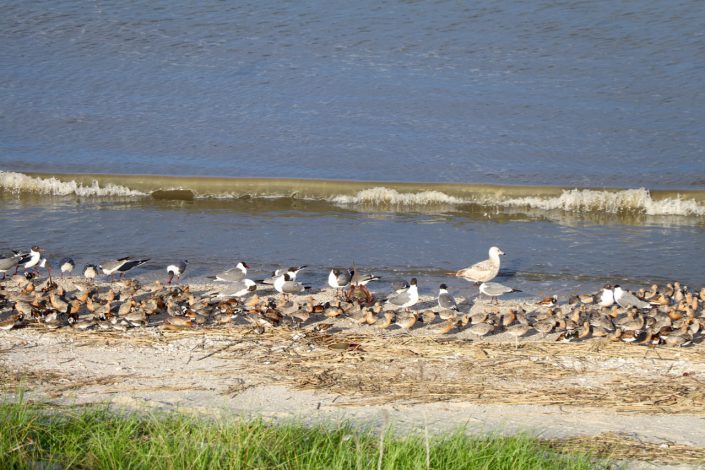
It’s well known that the Delaware Bay shorebird stopover depends on horseshoe crabs, but few know that Delaware Bay is a near perfect horseshoe crab habitat.
There are many places on the eastern seaboard where horseshoe crabs breed. Most are too small to provide sustenance for energy-starved shorebirds. Places like Cape Romain Refuge in South Carolina have enough horseshoe crabs so that one breeding female unearths eggs of another and thus lays out a tidy meal for shorebirds. But the areas are small and at this time unimportant to the population of shorebirds. Most of the others are too small to have eggs reach the surface. Its only in Delaware Bay where crab numbers reach into the millions and spawn in such great numbers that they spread like a carpet over nearly all beaches from Gandy’s Beach to Villas, approximately 20 miles of spawning habitat. The number of eggs and ultimately hatched young reach staggering numbers.

The huge population of horseshoe crabs on the bay is no accident. The bay almost seems built to suit the crabs. Crabs need beaches with large and deep sand flats, allowing just enough water to sufficiently oxygenate the eggs without drowning them. They need the sea floor to gently rise into breeding beaches, allowing easy access. While breeding, crabs have to eat small bivalves, which they find in abundance in the bay’s extensive intertidal and subtidal flats.
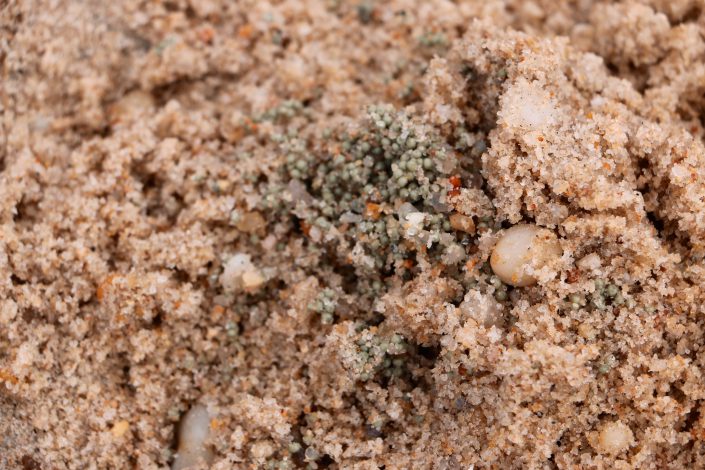
The most important aspect of the bay is its quickly warming waters in the spring. On Delaware Bay, horseshoe crabs don’t breed until waters reach 59 degrees. You won’t see this temperature on the Atlantic Coast until June. Not so on Delaware Bay! Although the bay has deeper water, mostly in sloughs that snake under the surface out to its mouth at Cape May, most of the water is relatively shallow — usually less than 18 feet. That may sound deep, but keep in mind the Chesapeake has 100 feet water for most of its length and deeper water throughout. The shallow water of Delaware Bay allows it to heat up soon after the air temperature rises.
Unfortunately, it also cools down quickly and because of this the crab spawn has stopped. The bay’s water temperature went up dramatically in late March and April, so much so that we worried it might reach the critical 59 degree threshold in April long before the birds arrived in May. But then the warm weather stopped and the bay temperature dipped than rose, several times in fact. By early May, it had gotten just above the threshold, heating up to about 61 degrees at the Cape Henlopen marine buoy. We hoped for the best. Crabs started to breed in good numbers on a few beaches, like Reeds Beach, but were thin elsewhere. We had about 20,000 shorebird relying on the spawn and the eggs that were brought to the surface.
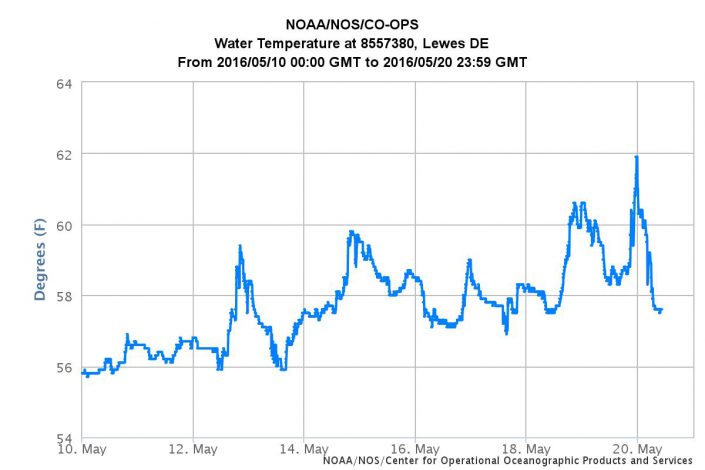
Than the bay cooled down again. A nasty western wind and cold front enveloped our area over the weekend and the cool weather followed. By Monday, the temperature went down again and the crab spawn stopped. This is bad.
When the spawn stopped the birds hovered up the remaining eggs in a few days. Then they started wandering to find eggs in odd places, under houses, along bulkheads. Some even went to areas like the oyster aquaculture racks to find eggs to the delight of the people trying to expand aquaculture. But what they saw was desperation.
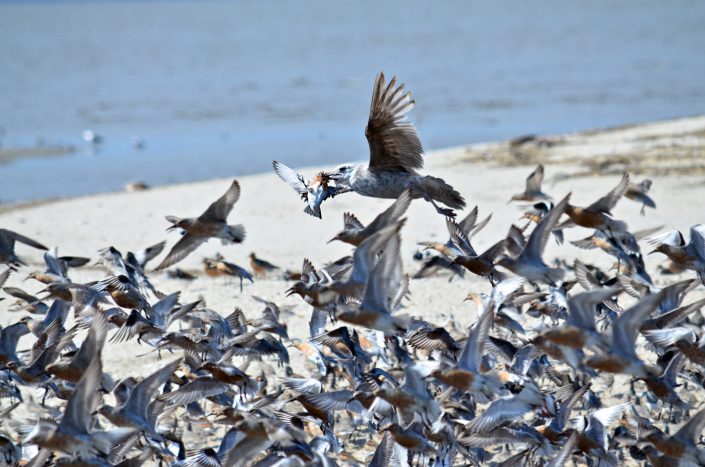
Worse the Black Back and Herring Gull that feed on eggs and overturned crabs couldn’t find eggs and started eating shorebirds. By the end of Thursday (May 19) we found 8 dead red knots. These gulls can swallow small sanderling and semipalmated sandpipers like gum drops, so we really don’t know how many shorebirds died.
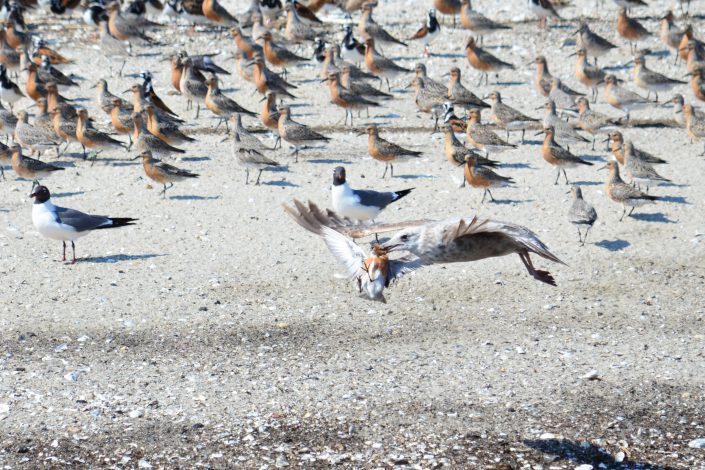
Relief might be in sight though. Thursday, Friday and today will be warmer. The bay’s temperature is back up over 60 degrees. Thursday night we had a fairly good spawn. Hopefully we will be back in business soon.
Learn More:
- Conserve Wildlife Foundation’s Delaware Bay Shorebird Project
- Conserve Wildlife Foundation’s online field guide: Red Knot
Dr. Larry Niles has led efforts to protect red knots and horseshoe crabs for over 30 years.
Discover more from Conserve Wildlife Foundation of NJ
Subscribe to get the latest posts sent to your email.
Leave a Comment
I tag horseshoe crabs at Moores Beach with Faith Zerbe of the Delaware Riverkeeper. I used to work on restoring anadromous fish runs in the NY/NJ Harbor with the Baykeeper, back in the day when Dery Bennett was Executive Director. Anyhow…I know this is the busiest time of year for you, but I wanted to let you know your blog is very informative. I’ve been worried about how the cool water temperatures were going to affect the spawning season, thinking it may extend it, but now I see as the migrating shorebirds come in, they cannot wait for a meal.. I’m very troubled to hear about the dead red knots you’ve found. Has this happened in previous years?
I take issue with the assertion that other Atlantic coast sites offer insufficient horseshoe crab spawn to support migratory shorebirds. There is ample evidence that many sites in the SE attract and support significant numbers of shorebirds including Red Knots. Furthermore, in between spring tide spawning events, adjoining beaches and shoals provide donax and/or mulinia as critical forage for the birds. I’d be pleased to share images of Red Knot concentrations on the GA coasts during spring and fall migration.
Comments are closed.